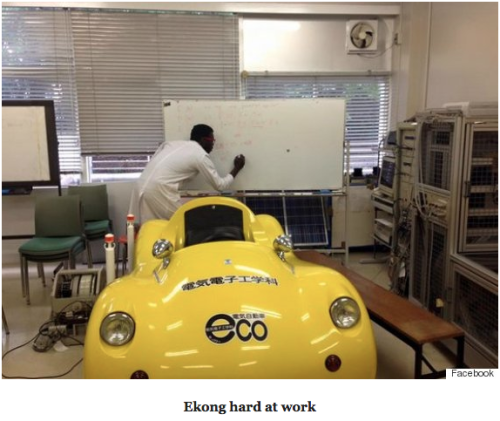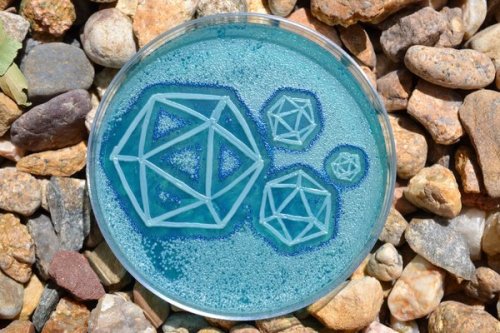In Your Opinion, What's Going To Happen When The Physical Properties Of Silicon Can't Sustain Moore's
in your opinion, what's going to happen when the physical properties of silicon can't sustain moore's law anymore
nothing, for two reasons
first some background: moore’s law states that every year the number of components (transistors) on integrated circuits will double (due to engineering breakthroughs). it has proved to be somewhat correct. it occurs due to our ability to manufacture smaller and smaller transistors which has a few effects, discussed later. eventually we will hit a point where it no longer matters how small we can print transistors as the fundamental electrical characteristics of silicon break down
in the next couple of years, we will see chips from intel with transistors printed about ten nanometers apart. we approach the limits silicon can handle, theoretically, around ~1nm
in circuits this small, you start seeing tunneling effects which are phenomenons of quantum physics wherein the propagation delay of charge falls to zero, meaning stimulation of the source terminal of a transistor would elicit a response on the drain terminal without any time elapsing. electrons just “blink” from one end of the xsistor to the other. you’d think this would be a good thing, but it isn’t. anyone with advanced physics degrees or deep VLSI knowlege is welcome to chime in why.
anyway
the first reason is there is no alternative to silicon. we have poured billions into researching things like gallium arsenide as a replacement for silicon in integrated circuits. it doesn’t work as well as silicon. people will try to convince you otherwise and those people are crackpots
we have poured a lot of time & money into researching quantum computers and discovered that they are only superior for very specific tasks such as brute-forcing encryption keys and other things of that nature. they will also probably never cost a billion dollars each to manufacture, never need anything less than a power plant and vats of liquid helium to operate, etc etc
the logical “next step” might be optical computing. here, you fundamentally change the hardware paradigm from electrons traveling through traces cut in a mediating silicon substrate between transistors to photons traveling through ?? mediated by ?? between “phototransistors”. the underlying principle is that light, in some cases, travels faster than voltage propagates through conductors. i’m going to get a lot of asks saying “durr kremlin but the speed of light is constant and i took high school physics and blah blah blah” and that’s a discussion worth its own post
this kind of tech is far off. not in our lifetime, not in your children’s lifetime, not in your children’s children’s lifetime
the reason we make transistors smaller is so we can pack them together more closely. this reduces the distance charge must travel in the circuit, making the cycles of these circuits take less time to complete. smaller transistors also generally necessitate less impedance and operate correctly at lower voltages, meaning their operating frequency can increase without a corresponding drop in reliability
these are all nice things, but they are only one piece of the puzzle. how you lay out these transistors is a much more critical and relevant problem. taking a previous VLSI design and shrinking it only works to a point after which you must redesign the layout entirely. intel’s “tick-tock” release/development department follows this model. long before and long after we hit the fundamental limits of silicon, the problem will be laying out our CPU circuits in such a way that we can actually eek out the performance provided by smaller transistors. this is a much, much harder problem to solve than “how do i make the transistor smaller”
the second, more pragmatic reason is that CPUs are fast enough already. there are scarce few problems that can be solved with faster discrete processors that can’t be solved with a million slower ones linked together
the whole tiny-transistor thing is really more of a marketing phenomenon than anything else
More Posts from Theidlerhour and Others



A Nigerian student has achieved the highest grades at a Japanese university for the past 50 years, while solving a mathematical equation which was unsolvable 30 years ago, in his first semester.
Ufot Ekong achieved a first in electrical engineering at Tokai University in Tokyo, scoring the best marks since 1965, CCTV Africa reported.
Ekong, from Lagos, also plays the saxophone, and runs a retail wears and accessories shop in Japan called Strictly African Japan.
The Nigerian speaks English, French, Japanese and Yoruba, his country’s native language, and paid his way through university himself.
He currently works for Nissan and has already patented two products, as well as making an electric car which reaches up to 128 kmph.
During his time at university, Ekong has won six awards for academic excellence.
Source



SEMENTINE
[adjective]
pertaining to sowing; of the time of seeding fields.
Etymology: ultimately derived from Latin semen, “seed of plants, animals or men; inborn characteristic; posterity; progeny; offspring,” figuratively, “origin, essence, principle, cause”.
[J. R. Slattum - Seed]
Python: What if everything was a dict?
Java: What if everything was an object?
JavaScript: What if everything was a dict *and* an object?
C: What if everything was a pointer?
APL: What if everything was an array?
Tcl: What if everything was a string?
Prolog: What if everything was a term?
LISP: What if everything was a pair?
Scheme: What if everything was a function?
Haskell: What if everything was a monad?
Assembly: What if everything was a register?
Coq: What if everything was a type/proposition?
COBOL: WHAT IF EVERYTHING WAS UPPERCASE?
C#: What if everything was like Java, but different?
Ruby: What if everything was monkey patched?
Pascal: BEGIN What if everything was structured? END
C++: What if we added everything to the language?
C++11: What if we forgot to stop adding stuff?
Rust: What if garbage collection didn't exist?
Go: What if we tried designing C a second time?
Perl: What if shell, sed, and awk were one language?
Perl6: What if we took the joke too far?
PHP: What if we wanted to make SQL injection easier?
VB: What if we wanted to allow anyone to program?
VB.NET: What if we wanted to stop them again?
Forth: What if everything was a stack?
ColorForth: What if the stack was green?
PostScript: What if everything was printed at 600dpi?
XSLT: What if everything was an XML element?
Make: What if everything was a dependency?
m4: What if everything was incomprehensibly quoted?
Scala: What if Haskell ran on the JVM?
Clojure: What if LISP ran on the JVM?
Lua: What if game developers got tired of C++?
Mathematica: What if Stephen Wolfram invented everything?
Malbolge: What if there is no god?

Indian rocket rises through the atmosphere carrying a billion dreams and hopes along with its payload.
Destroy the idea that men should respect women because we are their daughters, mothers, and sisters. Reinforce the idea that men should respect women because we are people.
(via masalaoflife)
I honestly don't mean for this to come across as ignorant or anything like that but I just seen your post about learning kanji's and they're Chinese characters? I didn't know Japanese used Chinese characters? I've only started learning mandarin but I never knew that Japanese used the same characters?
It’s not ignorant at all, please don’t feel that way! Years and years ago in Japan there was no comprehension of such characters, but some Japanese people were sent to China as scholars to basically learn everything about Classical Chinese and due to this there was a sudden (but still rather small) increase in Chinese literacy. It still took a while for Kanji to be fully incorporated into the Japanese language, and even the two other alphabets (hiragana and katakana) are said to be based off of the way in which Chinese was written during this time, in attempt to break down the language barriers between the two nations. Until these alphabets were used the Japanese didn’t have a writing system at all! This means that immigration and visitors from China and Korea in particular have had an influence on the way in which the Japanese language has evolved, and this is most likely why there are some similarities between Japanese and other languages you may study. Chinese and Japanese characters still have particular differences, so somebody who speaks Japanese/Chinese may briefly understand a text based on characters from their original tongue, but in general the strokes are sometimes varied and the pronunciation is completely different so they wouldn’t be able to read it fluently like one might expect (even if the character looks nearly identical.) Sorry if any of my information is wrong- this is just some general knowledge that I’ve picked up from my own research and studies!







Masterpieces in Agar. These are some of the most beautiful Agar Art pics from (and inspired by) the annual competition hosted by the American Society for Microbiology. Read more about the contest, the artists, and their work here.

This satellite, Explorer 24, was a 12-foot-diameter inflatable sphere developed by an engineering team at Langley. It provided information on complex solar radiation/air-density relationships in the upper atmosphere. It was launched on November 21, 1964.
-
 abtruseshade liked this · 9 years ago
abtruseshade liked this · 9 years ago -
 quantum-void reblogged this · 9 years ago
quantum-void reblogged this · 9 years ago -
 hreg16-blog reblogged this · 9 years ago
hreg16-blog reblogged this · 9 years ago -
 hreg16-blog reblogged this · 9 years ago
hreg16-blog reblogged this · 9 years ago -
 hreg16-blog liked this · 9 years ago
hreg16-blog liked this · 9 years ago -
 unique-ptr reblogged this · 9 years ago
unique-ptr reblogged this · 9 years ago -
 theidlerhour reblogged this · 9 years ago
theidlerhour reblogged this · 9 years ago -
 theidlerhour liked this · 9 years ago
theidlerhour liked this · 9 years ago -
 afoggygoose liked this · 9 years ago
afoggygoose liked this · 9 years ago -
 falungong-official reblogged this · 9 years ago
falungong-official reblogged this · 9 years ago -
 ricertrash69 liked this · 9 years ago
ricertrash69 liked this · 9 years ago -
 captainzana liked this · 9 years ago
captainzana liked this · 9 years ago -
 hazelweissbier reblogged this · 9 years ago
hazelweissbier reblogged this · 9 years ago -
 hazelweissbier liked this · 9 years ago
hazelweissbier liked this · 9 years ago -
 studiosquarebox liked this · 9 years ago
studiosquarebox liked this · 9 years ago -
 arraychel-blog reblogged this · 9 years ago
arraychel-blog reblogged this · 9 years ago -
 weaponized-mathematics liked this · 9 years ago
weaponized-mathematics liked this · 9 years ago -
 puddlet liked this · 9 years ago
puddlet liked this · 9 years ago -
 acaffeinatedkid liked this · 9 years ago
acaffeinatedkid liked this · 9 years ago -
 brandonhasitright reblogged this · 9 years ago
brandonhasitright reblogged this · 9 years ago -
 brandonhasitright liked this · 9 years ago
brandonhasitright liked this · 9 years ago -
 fractalist liked this · 9 years ago
fractalist liked this · 9 years ago -
 rugbytenenbaum liked this · 9 years ago
rugbytenenbaum liked this · 9 years ago -
 thesteveoprojekt liked this · 9 years ago
thesteveoprojekt liked this · 9 years ago -
 sapphicselene reblogged this · 9 years ago
sapphicselene reblogged this · 9 years ago -
 mary-jane-stuff reblogged this · 9 years ago
mary-jane-stuff reblogged this · 9 years ago -
 blackumi reblogged this · 9 years ago
blackumi reblogged this · 9 years ago -
 blackumi liked this · 9 years ago
blackumi liked this · 9 years ago -
 risinginsurgency reblogged this · 9 years ago
risinginsurgency reblogged this · 9 years ago -
 sayakafucker reblogged this · 9 years ago
sayakafucker reblogged this · 9 years ago -
 sayakafucker liked this · 9 years ago
sayakafucker liked this · 9 years ago -
 doritofu reblogged this · 9 years ago
doritofu reblogged this · 9 years ago -
 omarrojo1 reblogged this · 9 years ago
omarrojo1 reblogged this · 9 years ago -
 omarrojo1 liked this · 9 years ago
omarrojo1 liked this · 9 years ago -
 hatebulldozer liked this · 9 years ago
hatebulldozer liked this · 9 years ago
"To awaken my spirit through hard work and dedicate my life to knowledge... What do you seek?"
229 posts

